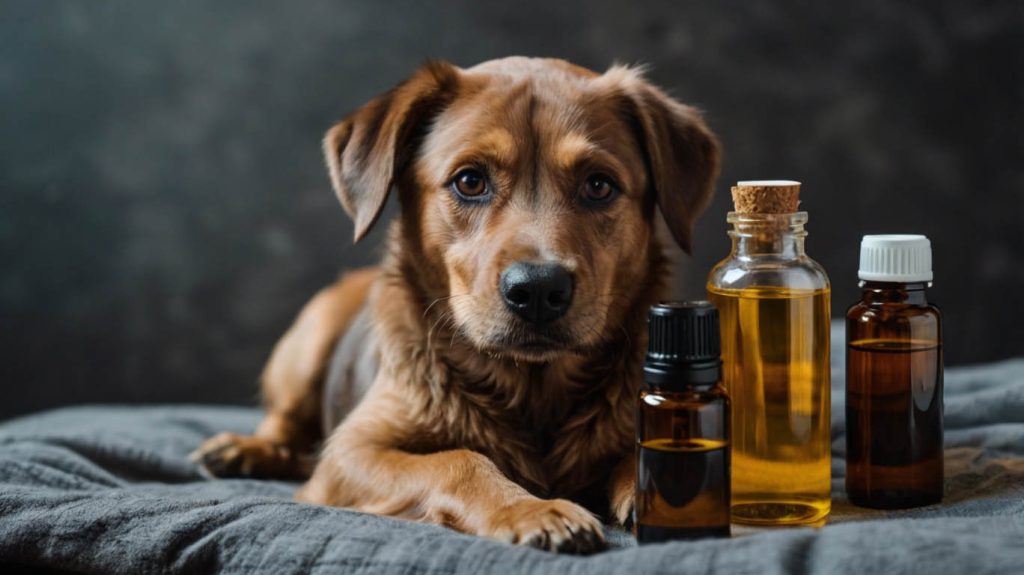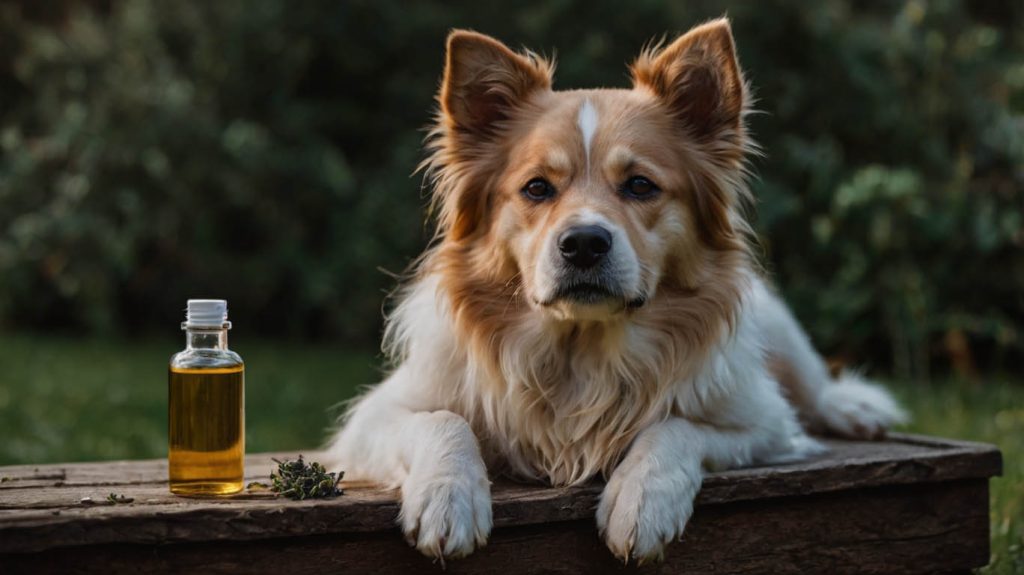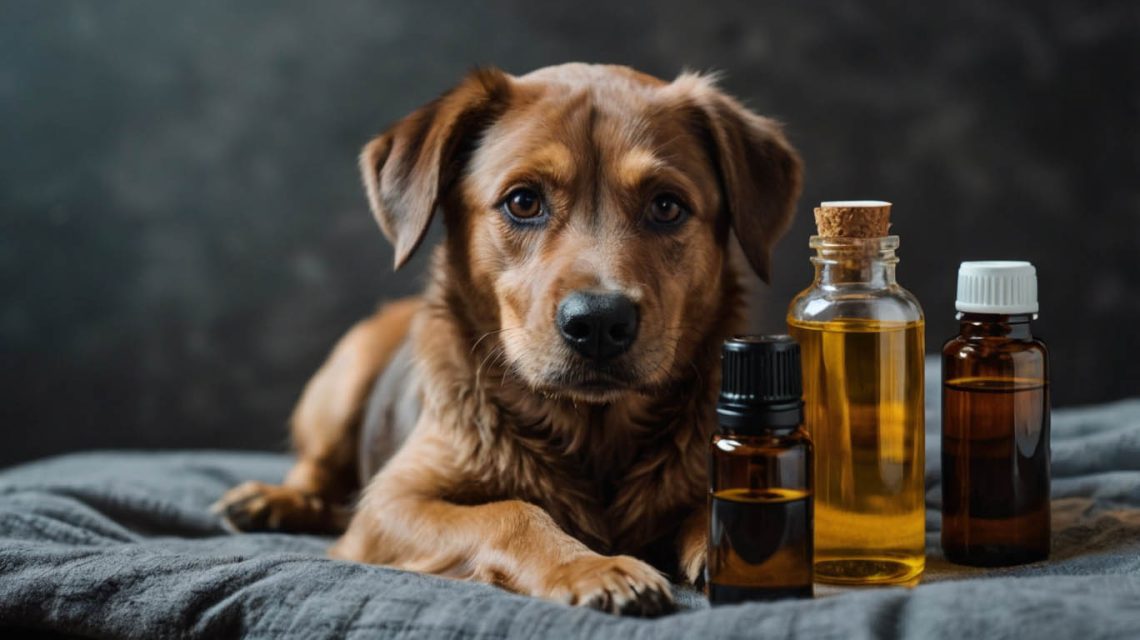Are Any Essential Oils Safe for Dogs? The Definitive Guide for Pet Parents
Sarah sat on the floor, gently stroking her rescue dog, Leo, who was trembling as another thunderstorm rumbled in the distance. She felt helpless. A friend had recently suggested using lavender essential oil for Leo’s anxiety, recounting how it calmed her own dog. Sarah was intrigued by the natural approach but also terrified. A quick internet search had pulled up horror stories of seizures and liver failure from essential oils. This left her paralyzed with one critical question: are any essential oils safe for dogs at all?
Sarah’s dilemma is a familiar one for millions of loving, cautious pet owners. You want to provide the best, most natural care for your companion, but the online world is a confusing minefield of conflicting information. For every glowing testimonial, there’s a tragic warning.
Consequently, this guide is here to cut through the confusion and provide a clear, balanced, and authoritative answer. We will explore the science, identify the specific oils that are generally considered safer, detail the non-negotiable safety rules, and list the oils you must avoid. Therefore, you can finally move from a state of worry to one of informed confidence.
The Conditional “Yes”: Answering “Are Any Essential Oils Safe for Dogs?”
Let’s address the central question immediately. The answer is not a simple yes or no. Instead, it is a conditional yes, and the conditions are everything. The safety of using any essential oil with your dog hinges on three critical factors:
- The Specific Oil: Some oils are known toxins, while others are gentler.
- The Method of Use: Diffusion, topical application, and ingestion carry vastly different risks.
- Dilution and Quality: The concentration of the oil and its purity are paramount.
A dog’s body is not a small human’s. Their incredibly powerful sense of smell and different liver metabolism make them far more sensitive. Therefore, to truly answer the question are any essential oils safe for dogs, we must first learn and respect these fundamental rules.

The List of Essential Oils That Can Be Safer for Dogs
While extreme caution is always advised, and a veterinary consultation is a must, experts and holistic veterinarians generally consider the following essential oils to be safer for use around dogs when used properly.
Lavender Oil (Lavandula angustifolia): The Calming Staple
This is the most well-known “safer” oil. Its calming properties are prized for helping with anxiety from storms, car rides, or separation. It’s crucial to use only high-quality Lavandula angustifolia, not a synthetic “lavender fragrance.”
Cedarwood Oil (Juniperus ashei or Juniperus mexicana): The Grounding Repellent
This oil has a pleasant, woodsy scent that is often used for its grounding, calming effects. It also has natural pest-repelling properties. Crucially, you must use only Texas or Virginia Cedarwood. Western Red Cedar (Thuja plicata) is from a different plant family and is toxic to dogs.
Frankincense and Chamomile: Gentle Soothers
- Frankincense: This earthy, resinous oil is excellent for creating a peaceful, stable environment.
- Chamomile (Roman or German): Like the tea, chamomile oil is renowned for its gentle, soothing, and relaxing effects.
Ginger and Myrrh: Other Considered-Safer Oils
When heavily diluted, ginger can be used for its warming, tummy-soothing aroma, while myrrh is sometimes used for its cleansing properties. These should be used with even greater caution.

The Non-Negotiable Rules for Using “Safer” Essential Oils
This is the most important section of this guide. If you are wondering are any essential oils safe for dogs, the answer only remains a “conditional yes” if you follow these rules without exception.
Rule #1: Dilution is Not Optional
You should never apply undiluted essential oils directly to your dog’s skin. They are far too potent and can cause chemical burns and irritation.
- Safe Dilution Ratio: A very safe ratio is 1-2 drops of essential oil per 1 tablespoon (15 ml) of a carrier oil.
- Safe Carrier Oils: Use a high-quality, dog-safe carrier oil like coconut oil, jojoba oil, or sweet almond oil.
- Always Patch Test: Apply a tiny amount of the diluted mixture to a small spot on your dog and wait 24 hours to ensure there is no adverse reaction.
Rule #2: A Vet Consultation is Your First Step
Before you purchase or use any essential oil, talk to your veterinarian. They know your dog’s health history and can provide guidance on whether any essential oil use is appropriate. This is the most responsible first step you can take.
Rule #3: Never Let Your Dog Ingest Essential Oils
The internal use of essential oils is where the most severe toxicity occurs. A dog’s liver cannot process many of the compounds in these oils, leading to poisoning and organ damage. Keep all bottles securely out of reach.
Rule #4: The Art of Safe Diffusion
Diffusing is a popular method, but a dog’s powerful nose requires a cautious approach.
- Use a Water-Based Diffuser: Only use a cool-mist, ultrasonic diffuser.
- Provide an Escape Route: Your dog must be able to leave the room and go to an area free of the scent. Never confine them with a running diffuser.
- Keep it Short and Sweet: Run the diffuser for only 20-30 minutes at a time, and ensure the room is large and well-ventilated.
- Less is More: Use only 2-3 drops of oil in a standard 100-200ml diffuser.
The “Absolutely Not” List: Essential Oils Unsafe for Dogs
This list is just as important as the safe list. The following common essential oils are known to be toxic to dogs and should be avoided at all costs.
- Tea Tree (Melaleuca): Highly toxic, causing severe neurological issues.
- Pine Oil: Can cause vomiting and damage to the nervous system.
- Wintergreen & Birch: Contain toxic aspirin-like compounds.
- Cinnamon & Clove: Potent irritants that can cause liver issues.
- Pennyroyal: A known and severe liver toxin.
- Eucalyptus: Can cause nervous system depression.
- Ylang Ylang, Anise, Thyme: And many others. The unsafe list is much longer than the safer list.
Recognizing the Signs of Essential Oil Toxicity in Your Dog
Knowing the warning signs is critical. If you see any of these after using an essential oil, stop immediately, move your dog to fresh air, and call your vet.
- Drooling, vomiting, or diarrhea
- Lethargy or weakness
- Stumbling or difficulty walking
- Coughing, wheezing, or difficulty breathing
- Redness or irritation on the skin
- Muscle tremors or seizures
Case Study Resolved: How Sarah Safely Helped Leo
Let’s return to Sarah and Leo. After her initial fear, she took a responsible step: she scheduled a consultation with her veterinarian. Her vet confirmed that a high-quality lavender oil could be tried cautiously.
Following her vet’s advice, Sarah bought a bottle of 100% pure Lavandula angustifolia. Instead of applying it to Leo, she put a single drop on a cloth and placed it near his bed (but out of his reach) before the next storm. She also ran her diffuser with just two drops of lavender for 20 minutes in their open-plan living room, leaving the bedroom door open for Leo. As the storm rolled in, Leo went to his bed, sniffed the cloth, and settled down with significantly less trembling. Sarah felt immense relief. She had found a way to help him by learning the answer to are any essential oils safe for dogs lies in education and extreme caution.
The Final Verdict: Safety Through Education
So, are any essential oils safe for dogs? Yes, a select few can be, but only when used with the utmost respect for their potency and your dog’s sensitive system. They are not a casual “air freshener” but a powerful substance that requires a “less is more,” safety-first approach.
Your dog’s health is in your hands. We strongly urge you to consult your veterinarian before introducing any essential oil into your pet’s environment. They are your best partner in navigating this topic. Share this guide to help other loving pet owners make safe, informed decisions.


